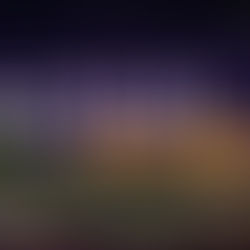New Arrangement: "Sorrow and Regret" from Golden Sun: The Lost Age (2002)
From the previous arrangement of the jolly "Tolbi", straight to the tragic "Sorrow and Regret", you guys seem to like going from one extreme to the other! Nevertheless, I hope you enjoy and don't regret your decision (like I'll be regretting eating these 6 slices of pizza later ... )
Feel free to download the score and recording here!
If you are one of my Patrons, you can now find the MIDI, XML and SIB files I created for this arrangement now available to download from your Patreon Google Drive folder!
Arranger's Note:
"Appearing after the final boss, this is one of Golden Sun's saddest themes (and is often paired with another sad theme that comes just afterwards).
The track begins sparsely; just two voices playing monophonic material, one of which is incredibly quiet. So essentially, most will only perceive one voice playing in the beginning - a very thin texture! For this arrangement, I brought up the quieter 2nd voice (here, in the vibraphone).
This opening harmony lays in a somber E minor - or really, E Aeolian (E-F#-G-A-B-C-D-E) through the descending E-D-C-B progression. Aeolian as a scale (also known as a "mode") is historically a tragic one, evoking feelings of sadness and imagery of tears (notably from John Dowland's Renaissance work, "Flow My Tears", which is in A Aeolian and follows the same progression Sakuraba uses here).
The entire track essentially follows this same descending progression throughout with only one or two transformations, such as E-D/E-C-B (0:28).
After the first 4-bar phrase, we get a melody - appearing here in the deeper alto flute (0:15). The melody is rather simple, but is overflowing with tragedy through its leaning on semitonal clashes (note the F# at 0:15 which clash against the vibraphone, and recur similarly throughout the track). These same semitonal clashes appear in other instances, such as through major 7th chords (C-E-G-B; 0:34).
At 0:28, a male choir appears, filling out the harmony with techniques such as 4-3 suspensions (B-E-F# to B-D#-F#; 0:50). Here, to prepare for the later addition of strings, I've added a cello doubling the bass progression.
Then, as the alto flute fades, I decided on bringing a full cohort of strings (0:38) to enhance the sorrowful aesthetic of this track with some yearning violins in octaves, and subtle tragic countermelodies buried within. A tubular bell was also added to invoke the sense of funerals and death, and the guitar was doubled in the harp so that it is not entirely lost in as the strings enter.
Whereas Sakuraba originally concluded the work at 0:53 and looped back to the beginning, I decided on extending the work by another 4 bars (the first time I've done so with one of these arrangements) in order to allow one final development of the material (and also, the arrangement became very structurally unbalanced without an additional 4-bars!)
For these final 4-bars (0:54), I reintroduced the alto flute, and an additional flute, doubling the melody, and also added a touch more movement to the vibraphone material that occurs throughout by doubling it a 16th note apart in the glockenspiel and celesta (for some added twinkling as if the dripping of tears)."

































Commenti